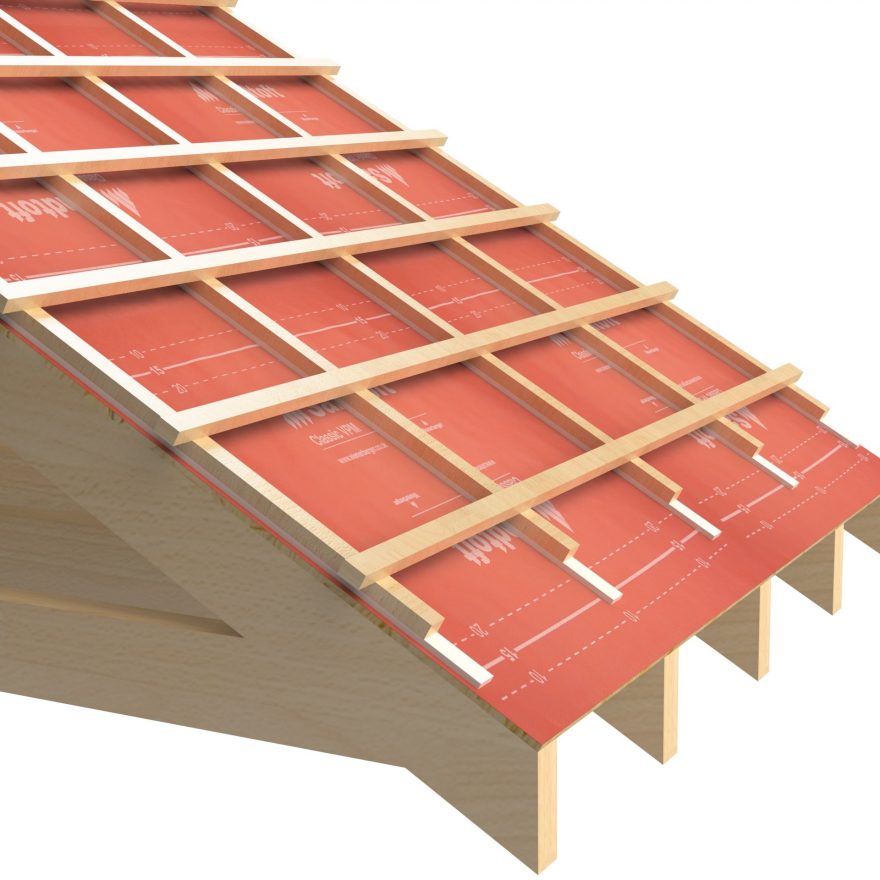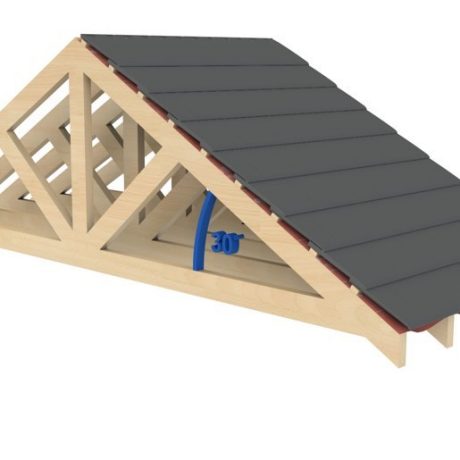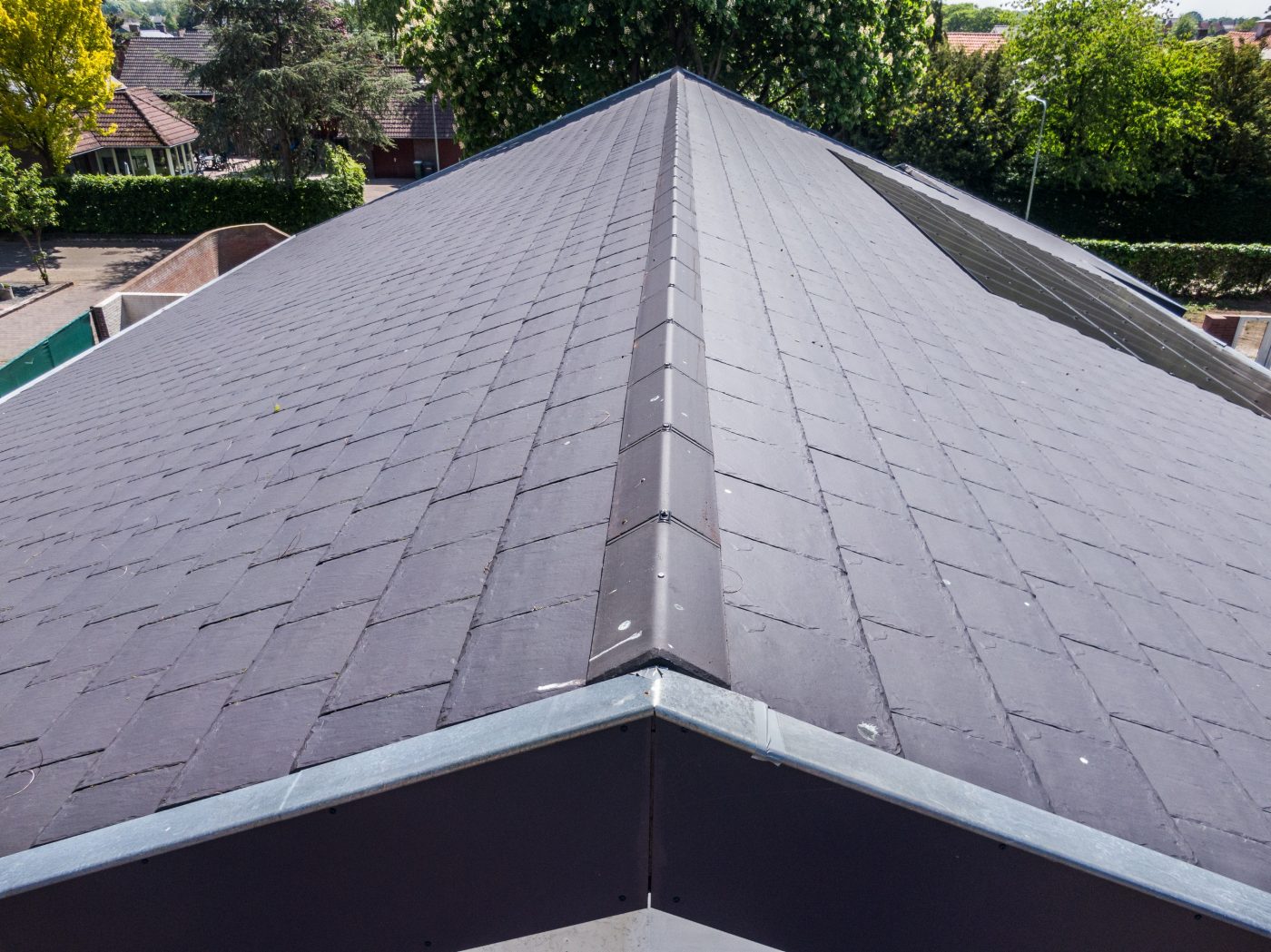Pitched roofs come in all shapes and sizes, from simple designs to complex shapes. Roof shape help defines the overall feel of a home, with steeply pitched roofs offering a more traditional look versus the more contemporary aesthetic of a low pitch.


Pitched roofs come in all shapes and sizes, from simple designs to complex shapes. Roof shape help defines the overall feel of a home, with steeply pitched roofs offering a more traditional look versus the more contemporary aesthetic of a low pitch.

Modern pitched roofing trends are being influenced by the fact that homeowners are increasingly likely to invest in their own property rather than spend money moving to a new home. Houses with steeper roof pitches allow for the creation of new living spaces by converting loft areas, while extensions added on to homes often require lower pitch roofs. This is because the pitch is often limited by trying to terminate the top abutment of the roof underneath the first-floor window, whilst the eaves is pushed as far away as possible to maximise the additional living space created by the extension.
A good range for roof pitches in the UK, with its often wet and windy weather conditions, is roughly anywhere between 30° to 50°.
A roof pitch in this range is very successful at providing protection from the elements, effective water drainage, peak thermal performance and good ventilation, helping to create a comfortable environment throughout the changing seasons. However, with projects such as domestic extensions, this pitch angle isn’t always possible when working around existing design features such as the location of first floor windows.
A great alternative to a flat roof, low-pitch roofs are designed so that water runs off safely without pooling and finding its way into the building structure.
When opting for a low pitch roof design, several important considerations need to be made. At a low pitch, some elements of the roof system are working at the limit of their capabilities, meaning that there is a higher chance of failure under extreme weather conditions.
Manufacturers put their products through rigorous testing to ensure they are fit for purpose and to provide a minimum pitch result, which is the minimum angle that a tile can be installed at as part of a watertight roof. For example, wienerberger’s Sandtoft 20/20 clay plain tile is designed to cope with low pitch installations, with a 15° pitch achievable with a 100mm headlap.
Although individual roof components have been thoroughly tested and perform perfectly well at the given pitch, constructing the roof with the same accuracy as that used under test conditions takes skill. It only takes a small gap or two in the tiling where it passes over a flashing and the risk of water ingress from rainfall or wind driven rain is increased.
In terms of effective water drainage, a roof with a gentle slope discharges rainwater at a slower rate than a steeper roof, simply due to gravity. When a roof structure also features long rafters, this can mean that a large amount of water can linger on the surface and find its way into any gaps, damaging underlay and battens over a prolonged period. Therefore, roof tile manufacturers often recommend a limited maximum rafter length. The pitch of a roof should be increased 1° for every half metre distance that the rafter length is over the recommended maximum length.
During rainfall, water runs from one single or double lapped tile to the course below, with sufficient side lap and pitch to prevent sideways or upwards creeping of water. It is important to pay close attention to the recommended headlap stated on manufacturer’s instructions, as often the lower the pitch, the larger the headlap should be.
Another common issue is that the underlay has not been installed with enough drape between the rafters. This means any water that runs down the underlay will be stopped by the next batten it runs in to, soaking the batten and pooling behind it. This water has nowhere to go and so tracks horizontally across the batten to the nearest nail hole where the battens have been fixed to the rafters.
To eliminate the reliance on the underlay drape, the safest option is to apply nail tape up the length of the rafter, then install counter battens before fixing the tiling battens. This provides a clear channel for any water penetrating the tiles to drain away.
As low-pitched roofs are often constructed on building extensions, they may have to deal with water shedding from a larger roof above, sometimes in a point load through a down pipe shoe, or in concentrated loads from valleys or dormer side abutments. Therefore, careful design is important, with such point loads avoided if possible.

Rather than relying on standard roofing construction, which is fine for steeper roofs, with low pitches it is advisable to detail and construct the roof to protect vulnerable areas such as eaves, valleys, abutments, roof window surrounds and other such junctions. These areas need to be considered even more carefully with low pitched structures to make sure that they are contributing to a watertight roofing system.
Eaves are a common place for leaks to occur, particularly at low pitches. Underlay can sag behind the fascia board and collect water, where it will eventually begin to drip through the underlay and on to the feature below, which can often track back into the property.
An eaves ventilation kit with an underlay support tray prevents the underlay from sagging at this critical point and water is free to flow into the gutter and away from the roof. At extremely low pitches it may even be necessary to lower the fascia board, drape the support tray and underlay over the fascia and then fix some timber with weep holes along the length of the fascia. It is important to ensure there is enough of a fall angle to allow the water to drain in to the gutter while also making sure the bottom course of tiles are set at the same angle as the rest of the roof and not tilted up or down.
A common misconception in roofing is that you can go below a roof tiles minimum pitch by simply increasing the headlap, this is not always true. All wienerberger tiles have a datasheet that shows what the tile’s minimum roof pitch is, as well as the maximum and minimum headlap the tiles must be installed between.
Before purchasing roof tiles, you should always check that the tiles are suitable for the pitch of the roof and then, if the tiles are suitable, make sure they are installed with the correct amount of headlap. Some roof tiles have two different values for minimum headlap, as an increased headlap may be required at lower pitches.
In summary, a low pitch roof often throws up more issues than a standard, steeper pitched roof, but these issues can be avoided by using the correct products and installing them in line with manufacturer’s guidelines.
We at wienerberger offer both the correct products and installation guides but if you are ever unsure, we would recommend that before you start any work you give our Technical team a call so we can better advise you.
To find out more about low pitch roofs, download our technical guide here.
Find products, guidance and information on how to get the most from your roofing projects.

Browse our range of roofing tiles and accessories, order a sample, or get in touch to discuss your requirements.